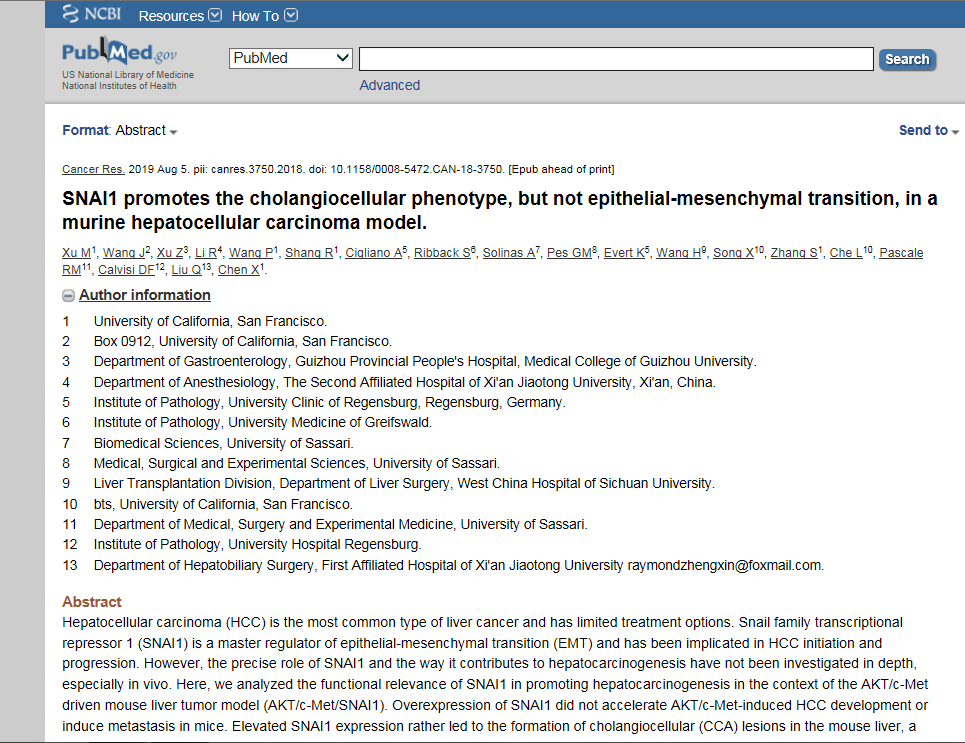Recently, a research article entitled SNAI1 promotes the cholangiocellular phenotype, but not epithelial-mesenchymal transition, in amurine hepatocellular carcinoma model with Dr. Xu Meng as the co-first author, a team member led by Professor Liu Qingguang from Department of Hepatobiliary Surgery in the First Affiliated Hospital, was published in Cancer Research. The hospital is the first affiliation, and professor Liu Qingguang is the corresponding author of this article.
The innovative findings in this study suggest that overexpression of SNAI1 in the mouse liver tumor model may play a role in regulating tumor growth rather than directly induce hepatocarcinogenesis. Overexpression of SNAI1 in mouse liver can lead to the formation of Akt/c-Met-induced cholangiocellular-like phenotype, whereas it fails to promote the formation of epithelial-mesenchymal transition (EMT) or to induce distant metastasis. Overexpression of SNAI1 also fails to promote c-Myc-induced cholangiocellular-like phenotype in hepatocellular carcinoma. Elevated expression of SNAI1 in cell linesin vitrocan cause EMT. The role of overexpression of SNAI1 in promoting the formation of cholangiocellular-like phenotype in hepatocellular carcinoma cells depends on the existence and activation of Yap. In The Cancer Genome Atlas (TCGA) database, the expression of SNAI1 is correlated with the gene expression of cholangiocellular-like phenotype rather than the gene expression of EMT phenotype. The findings in this study reveal that SNAI1 probably plays a role in promoting cholangiocellular-like phenotype in hepatocellular carcinoma via the regulation of Yap.

Article link:https://cancerres.aacrjournals.org/content/early/2019/08/03/0008-5472.CAN-18-3750.full-text.pdf
https://www.ncbi.nlm.nih.gov/pubmed/31383647